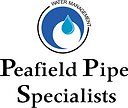In a world where industries are constantly evolving and striving for perfection, one critical aspect often gets overlooked: leak detection. Whether it’s a pipeline transporting precious fluids, a storage tank holding hazardous materials, or a nuclear reactor cooling system, identifying leaks early can prevent catastrophic disasters and save lives. The method that has proven to be a game-changer in this crucial endeavor is hydrostatic pressure testing.
Hydrostatic pressure testing is a technique that involves filling a system with a liquid, typically water, and applying internal pressure to identify any leaks or weaknesses in the structure. This method is a staple in various industries, including oil and gas, construction, manufacturing, and even food production. In this article, we will delve into the fascinating world of hydrostatic pressure testing, exploring its principles, applications, benefits, and future advancements.
The Science Behind Hydrostatic Pressure Testing
Before we dive into the applications of hydrostatic pressure testing, let’s first understand the science behind it. The principle is elegantly simple: if there is a leak or structural weakness in a system, the pressure will cause liquid to escape through it. By closely monitoring the pressure and the rate of fluid leakage, engineers and technicians can pinpoint the exact location and severity of the problem.
In practice, the process involves several key steps:
System Preparation: The first step is to prepare the system for testing. This includes isolating the section to be tested, ensuring it is clean and free of debris, and making any necessary connections to the test equipment.
Filling with Liquid: Water is the most commonly used testing fluid due to its availability and incompressibility. The system is filled with water until it reaches the desired pressure level.
Pressurization: Once the system is filled, pressure is applied gradually and steadily. This pressure is maintained for a specified duration, allowing time for any potential leaks to become apparent.
Monitoring: Highly sensitive pressure gauges and leak detectors are used to monitor the test. Any drop in pressure or visible signs of leakage are recorded and analyzed.
Completion and Evaluation: After the test, the system is depressurized, and the water is drained. The collected data is then evaluated to determine the integrity of the system.
Applications of Hydrostatic Pressure Testing
Hydrostatic pressure testing finds applications in a wide range of industries, each with its unique requirements and challenges.
Oil and Gas: The oil and gas industry heavily relies on hydrostatic pressure testing to ensure the integrity of pipelines, wellheads, and storage tanks. Detecting leaks in these systems is paramount, as even a small leak can lead to environmental disasters and costly downtime.
Construction: In construction, pressure testing is used to assess the structural integrity of buildings, bridges, and tunnels. It helps identify weak points in concrete and steel structures, ensuring they can withstand their intended loads and environmental conditions.
Manufacturing: Manufacturers use hydrostatic testing to verify the strength and reliability of pressure vessels, such as boilers and gas cylinders. This ensures that these containers can safely contain high-pressure substances.
Aerospace: Aircraft manufacturers employ pressure testing to check the airtightness of aircraft fuel tanks and hydraulic systems. Detecting leaks in these critical components is essential for flight safety.
Food and Beverage: In the food and beverage industry, ensuring the integrity of containers and packaging is vital to prevent contamination and spoilage. Hydrostatic testing is used to verify the seals on cans, bottles, and other containers.
Benefits of Hydrostatic Pressure Testing
The popularity of hydrostatic pressure testing is not just a coincidence; it offers several key advantages:
Accuracy: Hydrostatic testing is incredibly accurate in identifying leaks and weaknesses. Even the tiniest of leaks can be detected, ensuring that potential problems are addressed before they become major issues.
Safety: By pinpointing problems early, hydrostatic testing enhances safety. In industries like oil and gas, where leaks can lead to catastrophic accidents, this method is a lifesaver.
Cost-Effective: While initial setup and testing can be costly, the long-term benefits far outweigh the expenses. Preventing accidents and downtime saves money and resources in the long run.
Versatility: Hydrostatic testing can be applied to a wide range of systems and materials, making it a versatile tool for various industries.
Environmental Impact: By preventing leaks and accidents, hydrostatic testing contributes to reducing environmental damage caused by the release of hazardous materials.
Future Advancements in Hydrostatic Pressure Testing
As technology continues to advance, so too does the field of hydrostatic pressure testing. Here are some exciting developments on the horizon:
Automation: The integration of automation and robotics is streamlining the testing process, reducing the need for human intervention and improving accuracy.
Advanced Sensors: More sophisticated sensors and detectors are being developed, allowing for even earlier leak detection and more precise data collection.
Non-Destructive Testing: Researchers are exploring non-destructive testing methods that can assess the integrity of a system without filling it with water, reducing costs and environmental impact.
Data Analytics: Big data and analytics are being leveraged to better interpret test results and predict future maintenance needs.
In conclusion, hydrostatic pressure testing is a powerful tool that plays a vital role in ensuring the safety and reliability of systems across multiple industries. Its accuracy, versatility, and potential for further advancements make it a cornerstone of modern engineering practices. As industries continue to evolve, hydrostatic testing will remain at the forefront, protecting lives, the environment, and valuable assets.
